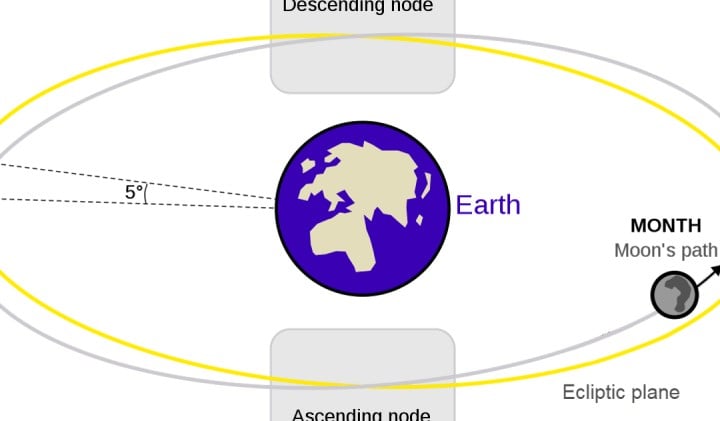
The sunrise and sunset are natural phenomena that occur regularly in our Universe. In reality, the Sun does not actually rise and set, but rather remains stationary. Contrary to the beliefs of our ancient ancestors, it is not the celestial luminary that revolves around our planet, but rather the Earth, along with the other seven planets, revolves around the Sun. Additionally, the Earth rotates around its axis, moving from west to east.
Knowing the direction from which the Sun rises can be beneficial for tourists, as it can help them orient themselves in unfamiliar terrain. It can even serve as a substitute for a compass. Furthermore, there are individuals who enjoy observing the sunset. This article provides readers with information regarding the locations where the Sun sets and rises.
General information
If you were to ask people, “Which direction does the Sun rise?” then most would consider the question to be somewhat “silly” and respond by saying, “The Sun rises in the east.” However, this answer is not entirely accurate. Similarly, the common response to the question, “Where does the Sun set?” is also incorrect. To be more precise, these answers are only correct on two specific days of the year: September 23 and March 21, also known as the autumn and vernal equinoxes. On these particular days, the duration of day and night are equal, with 12 hours of daylight and 12 hours of darkness. Therefore, it is on these days that the Sun truly rises directly in the east and sets directly in the west.

During other times, the Sun follows a different path across the sky, resulting in either a shorter trajectory (leading to longer nights) or a longer trajectory (leading to longer days).
Additionally, it is important to mention two significant dates – December 22nd and June 21st. These dates mark the winter and summer solstice, respectively. As the names suggest, these are the days when the Sun remains in the sky for the longest period of time. On the winter solstice, this phenomenon occurs in the Southern Hemisphere, while on the summer solstice, it occurs in the Northern Hemisphere. But why does this happen?
Categories of Hemispheres and Their Distinctions
The classification of hemispheres is divided into four main types: Southern and Northern, as well as Western and Eastern. To provide a concise overview of the Western and Eastern hemispheres, it is important to highlight their dissimilarities in terms of time zones. In other words, when daytime occurs in the Western Hemisphere, nighttime prevails in the Eastern Hemisphere, and vice versa. This phenomenon is directly attributed to the Earth’s rotational movement on its axis. As the Earth rotates, various regions are exposed to sunlight at different intervals throughout the day.
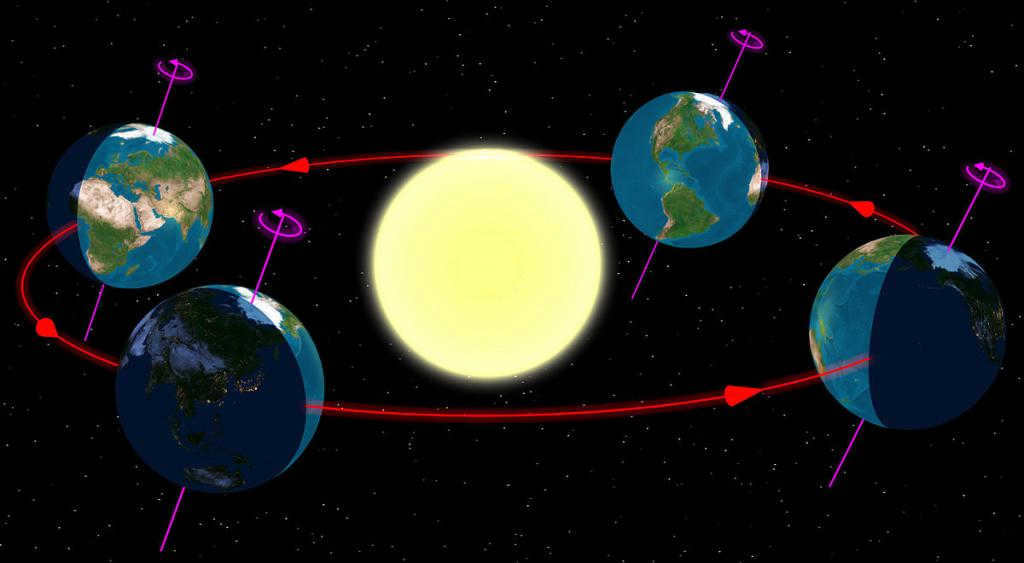

However, our focus lies on the Northern and Southern hemispheres, which exhibit contrasting seasons. In other words, when it is winter in the Northern Hemisphere, it is summer in the Southern Hemisphere, and vice versa. Similarly, spring and fall are reversed in each hemisphere. These seasonal differences arise from the Earth’s rotation around the Sun and the uneven distribution of sunlight.
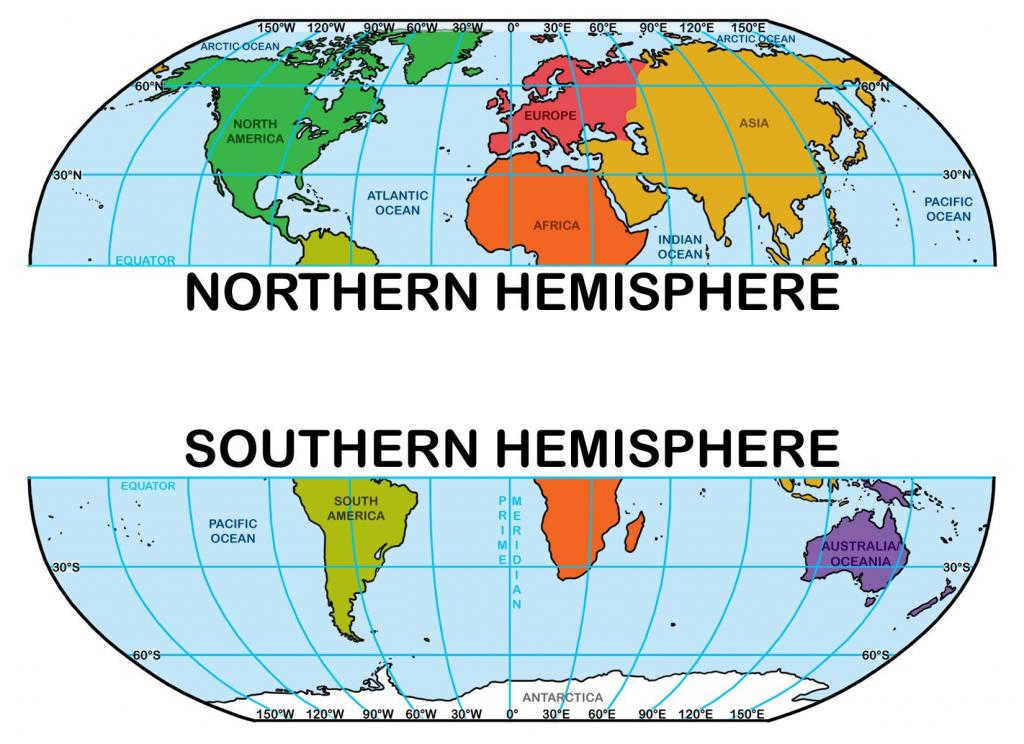
Where does the Sun set and where does it rise?
If we consider the Northern Hemisphere, during the summer months, the Sun rises in the direction between north and east and sets between north and west. In winter, it rises between south and east, and sets between west and south. In the fall and spring seasons, the Sun rises between northeast and southeast, and sets between northwest and southwest. During the fall and spring equinoxes, as previously mentioned, it rises and sets precisely in the east and west, respectively.
In the Southern Hemisphere, the situation is the opposite. This is the reason for the variation in seasons.
It is worth noting that the disparity between night and day increases as you move northward in the Northern Hemisphere and southward in the Southern Hemisphere. In other words, the closer a region is to the pole, the more pronounced the contrast between night and day becomes. Conversely, the closer a region is to the equator, the smaller the difference between day and night.
To illustrate this, consider the poles where nights and days can last for several months. On the other hand, at the equator, there is very little distinction between night and day. As a result, the equator experiences a consistent level of light throughout the year, with no distinct winter or summer seasons.
Summary
Understanding the location of the sunset and sunrise can be beneficial not just for personal growth, but also in practical situations. For instance, when embarking on a hiking trip, being able to identify the direction of the Sun can greatly assist with navigation and orientation on unfamiliar terrain.
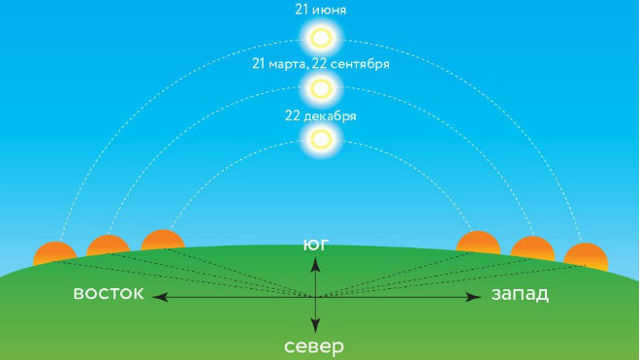
Tourism
Which direction does the sun rise and set from?
Every day on Earth, we witness the beauty of sunsets and sunrises. Meanwhile, astronauts aboard the International Space Station have the privilege of experiencing an average of 16 sunrises and sunsets per day. Unlike the Little Prince, we cannot manipulate the sun’s movements or alter its path. However, thanks to our understanding of celestial mechanics, we can accurately predict when these events will occur on any given day.
Within our solar system, the Earth, along with the other planets, orbits around the Sun. From this perspective, the Sun can be regarded as the immovable center of our system. The Earth’s rotation around the Sun, combined with its axial tilt relative to the ecliptic plane, is the fundamental cause of our changing seasons.
The movement of our planet around its axis is responsible for the alternating periods of day and night. Another effect of this tilt is the occurrence of periods when the Sun does not set in the evening at the Earth’s geographic poles. This phenomenon is known as polar day, and it can last for up to six months.
The Earth completes one full rotation in a time span of 23 hours, 56 minutes, and 4 seconds. Due to its consistent rotation in the same direction, from west to east, the Sun always appears to rise in the east and set in the west, regardless of the hemisphere. At other times, the sun appears to move from north to south.
The positioning of sunrise and sunset has captivated human interest since ancient times. Ancient travelers used it as a means of navigation, particularly for sailors who relied on the sun and stars for orientation.
Depending on the season, the position of sunrise and sunset varies. During summer and spring, the sun rises in the northeast and sets in the northwest. However, in fall and winter, the sun rises in the southeast and sets in the southwest.
Definition of Sunrise and Sunset
Sunrise and sunset refer to the specific times when the sun ascends and descends in the sky.
Sunrise
The beginning of sunrise is defined as the precise moment when the upper edge of the Sun aligns perfectly with the horizon line. In astronomy, sunrise is considered complete when the entire Sun is above the horizon. However, the exact time of sunrise can vary based on the observer’s location: at higher elevations, sunrise may occur earlier.
Due to the Earth’s atmosphere, the visibility of sunrise begins before the top of the Sun’s disk actually reaches the horizon. At the equator, sunrise can be seen approximately 10 minutes earlier, while at mid-latitudes it occurs about 30 minutes earlier. In polar regions, sunrise can even be observed up to 2 days earlier.
Twilight
As the sun descends towards the western horizon, its radiant glow diminishes, transitioning from a vibrant yellow to a warm orange, before gradually transforming into a mesmerizing array of red hues. Simultaneously, the surrounding sky undergoes a remarkable metamorphosis, transitioning from a golden hue to a striking blood-red against a backdrop of serene blue, occasionally tinged with hints of green.
When witnessing the enchanting spectacle of twilight, it is advisable to direct your gaze towards the opposite side, where the Earth’s shadow emerges as a celestial belt of ethereal bluish ash. Above this captivating belt lies a luminous segment known as the Belt of Venus. As long as the sky remains unobscured by clouds, this captivating phenomenon can be observed from any location around the globe.

Sunset
The colors become more vibrant as the sun sinks below the horizon. As the sun sets, the rays of light create a breathtaking display, starting off strong and gradually fading into red streaks. Simultaneously, the belt of Venus vanishes, making way for the moon to rise and night to unfold.
Twilight
Twilight is the period that occurs before sunrise and before sunset. It is a remarkably breathtaking sight to behold. The celestial body’s disk is positioned very close to the horizon, allowing some of its rays to penetrate the upper atmosphere and reflect off the Earth’s surface. This creates a colorful spectacle that lasts for approximately two hours, although the duration varies depending on the latitude. In the polar regions, twilight can last for several hours before sunset, and in the equatorial regions, it only lasts for about 20-25 minutes before sunrise.
During this enchanting period, we are treated to a mesmerizing view of the sun’s rays illuminating the Earth’s surface and the sky, casting a myriad of different color shades.

Distinguishing between a sunset and a sunrise
Sunsets and sunrises are a captivating sight. However, there are distinct differences in the color spectrum captured in photos of the sky during these two events. During a sunrise, shades of blue, pink, and violet dominate the scene. On the other hand, sunsets exhibit deep reds, yellows, and sometimes even greens.
The more vibrant colors observed during sunsets can be attributed to the daytime heating of the earth’s surface, which leads to increased air currents carrying dust and reduced humidity. As the sun sets, the air becomes thicker and more suspended particles fill the atmosphere. This causes the sun’s rays to scatter when they interact with these particles at an angle.
The dispersion of colors is most pronounced in the color red. In the presence of dispersion, all colors, except for red, are dispersed and absorbed, resulting in the observer perceiving mostly red. The highest saturation is achieved when the sun is positioned 4-5° below the horizon. This extraordinary fiery hue is commonly referred to as “Buddha rays”.
Over the course of history, individuals have attempted to elucidate the phenomenon of color harmony, often attributing mystical qualities to particularly vibrant sunsets and endeavoring to establish a link with meteorological phenomena.
Various Kinds of Hemispheres and Their Distinctions
There exist four distinct kinds of hemispheres – the southern and northern, as well as the western and eastern. When summarizing the attributes of the western and eastern hemispheres, it becomes evident that they contrast in terms of their time zones. In other words, during the daytime in the western hemisphere, it is nighttime in the eastern hemisphere, and vice versa. This is due to the rotation of the Earth on its axis. At different periods throughout the day, the Earth exposes different sections of itself to the Sun.
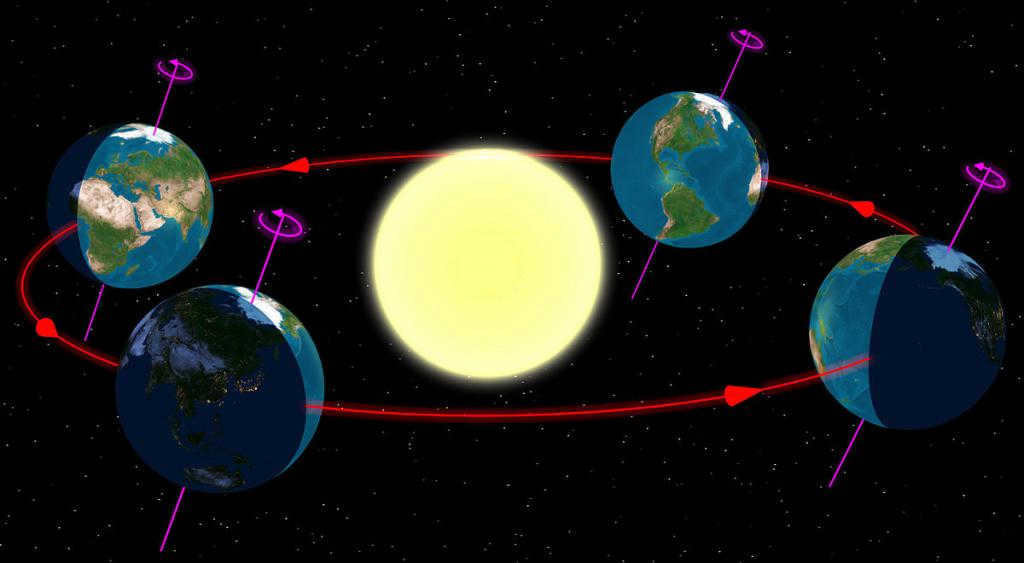

Nevertheless, our focus lies on the northern and southern hemispheres, which exhibit contrasting characteristics throughout the year. In other words, when the northern hemisphere experiences winter, the southern hemisphere welcomes summer, and vice versa. Similarly, spring and fall take turns in each hemisphere accordingly. These seasonal variations can be attributed to the Earth’s orbit around the Sun and the resulting uneven distribution of sunlight.
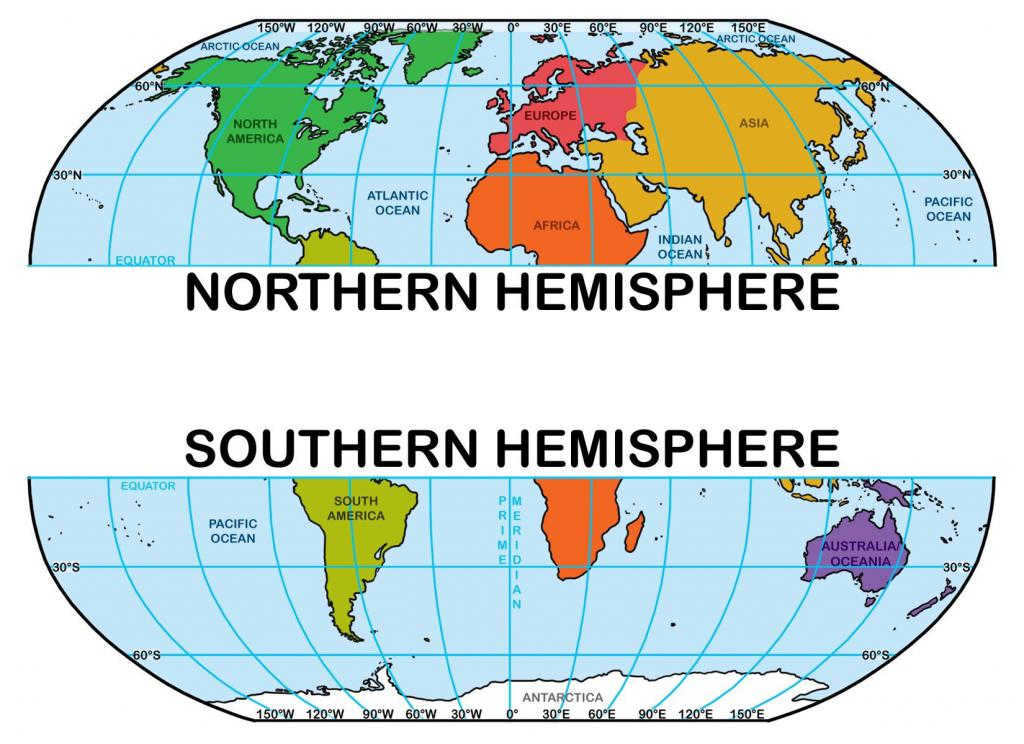
The Movement of the Sun
In both the northern and southern hemispheres, the sun’s movement is from east to west. However, there is a difference in the direction it moves during the day. In the northern hemisphere, the sun is at its southernmost point at exactly noon and moves in a clockwise direction. Conversely, in the southern hemisphere, the sun appears to move counterclockwise from east to west, and at noon, it is exactly in the north.
It’s important to note that our human concept of time does not align perfectly with astronomical time. Even without adjusting for clocks, our standard time is about an hour behind astronomical time. This means that in the northern hemisphere, the sun will reach its southernmost point not at 12 noon, but at 1 a.m. So, if you were to stand facing the sun at exactly 1 a.m., you would naturally be facing north, with your back to the south, your left side facing east, and your right side facing west.
Depending on the time of year, the positions of sunrise and sunset change. They shift towards the northeast and reach their peak on July 21 after March 21. Subsequently, the sunrise moves further towards the south, and on September 22, the sun rises exactly in the east.
To determine your orientation using the sun, it is essential to know the locations where the sun rises and sets, as well as its movement throughout the seasons. One method to orient yourself is by utilizing shadows. To do this, place a one-meter long stick in a way that its shadow is visible and mark the end of the shadow. After 15 minutes, when the shadow has shifted, make a second mark and connect the two marks.
The line you have created represents the east-west axis. If you position yourself in a way that the first mark is on your left and the second mark is on your right, your face will be directed towards the north, your left hand will point towards the west, and your right hand will point towards the east.
Having knowledge of the sunrise and sunset locations can prove to be extremely beneficial in a critical scenario.
Locating the cardinal directions using the Sun
There are numerous techniques for orientation, but here are five simple methods that will enable you to find your bearings in nearly any situation where the sun is visible.
All of these methods are dependable and can serve as an alternative when, for any reason, it is not feasible to utilize contemporary instruments specifically designed for this task.

These techniques are more trustworthy compared to the approaches of finding direction by observing moss, landmarks, and religious symbols, which are frequently mentioned in literature. They are also more convenient than celestial-based techniques in most scenarios, as it is often necessary for a group or an individual in an emergency situation to determine their orientation during daylight hours when the damage is minimal and the surrounding landscape and prominent features are more visible.
Using Time and the Sun
You are already aware of the sun’s position at 6 a.m., 6 p.m., and 12 p.m., so you can utilize your watch to approximately determine the cardinal directions during these times.
For instance, at 6 p.m., the sun should be located in the west. This implies that if you stand in a way that the sun is directly to your left, you will be facing north, with south behind you, and east to your right.
Under the Shadow of the Pole
When the sun is directly overhead during the middle of the day, objects that are vertically straight, like power poles, will cast the shortest shadows. The shortest shadow indicates that the sun is aligned on a north-south axis. In the tropics and equatorial regions, which hemisphere the shadow indicates depends on the time of year.
These two techniques can help you find your bearings on a clear day. However, they are not ideal for navigation purposes as they only work during specific times of the day (6 AM, 12 PM, and 6 PM). Therefore, let’s explore a more practical method for navigation in this scenario.
Using two shadow points
Due to the sun’s constant movement from east to west, the shadow cast by objects in its rays will move in the opposite direction. Therefore, by marking the position of the shadow’s end twice at short intervals (around 15-20 minutes) on a flat and horizontal surface, two points can be obtained. These points can then be connected by a straight line, which will roughly indicate the west-east direction (the first point indicating the west, and the second indicating the east). Once two cardinal directions are known, it becomes easier to determine the remaining ones.
However, it is important to note that this method does have its limitations. It requires a flat and level surface, which may not always be available. For instance, individuals in mountainous areas or those aboard a moving boat may encounter difficulties when attempting to use this method.
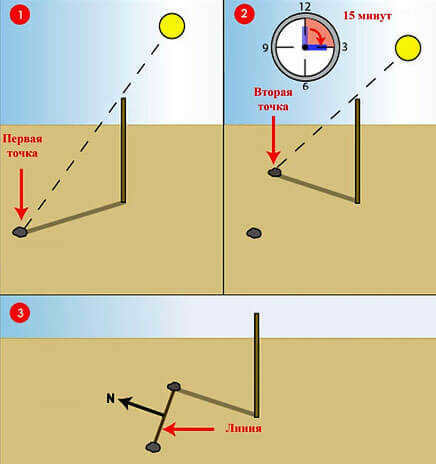

An uncomplicated approach that utilizes shadows to determine the direction of the north.
Therefore, let us examine an alternative technique that does not require a level horizontal plane.
Using the Sun and a Clock with Hands
This technique relies on the fact that the Sun moves at twice the speed of the hour hand on a clock. In other words, while the hour hand only rotates 30 degrees, the Sun travels 60 degrees across the sky.
To determine the direction from north to south:
- Position the clock horizontally, with the face facing up.
- Align the hour hand with the Sun or its projection on the horizon.
- Identify the direction as either south or north, depending on your location on the globe. To do this, find the midpoint between the angle formed by the hour hand and the number “12” on the clock. This midpoint will indicate the direction towards the south (or north).
Take into account that if it’s 6 am, the bisector will indicate the number “9”, and if it’s 6 pm, it will indicate the number “3” on the dial. Frequently at this stage, individuals learning this technique will have inquiries and confusion.
It’s worth mentioning that this technique exclusively functions accurately in the Northern Hemisphere when the Sun moves from left to right. In other areas, when the Sun moves in the opposite direction, the technique needs to be adjusted.
However, what if the clock is not a traditional mechanical one with hands, but rather an electronic one? Or what if the only available time source is a radio clock? In such situations, I have devised my own technique that I have been employing for a number of years.
As the Sun Moves
This technique is based on the concept that the Sun’s movement across the sky follows an angular velocity of 15 degrees per hour from east to west. At 12 o’clock, the Sun is positioned on a north-south line. The procedure is carried out in the following manner:
- Determine the remaining time until noon (12 hours) or the elapsed time since noon.
- Using the known time and the Sun’s speed, calculate the angle at which the Sun will be in relation to the north-south direction.
- If it is before noon, set the calculated angle as the Sun’s projected position on the horizon. If it is after noon, adjust this angle in the opposite direction relative to the Sun. This indicates the north-south direction.
If it is not yet noon, position yourself so that the Sun is to your right. If it is noon, position yourself so that the Sun is to your left. In this scenario, north will be directly in front of you and south will be behind you.
These last two techniques provide the most accurate results at higher latitudes during the polar day when the Sun is visible above the horizon, and at mid-latitudes during the winter when the Sun is not very high above the horizon. However, in tropical regions and on the equator, these methods can result in significant errors. This is because the Sun is at its highest point above the horizon at noon in these areas, so using these methods for orientation is not recommended.
It is important to mention that in all the aforementioned methods that utilize time measurements, it is essential to apply adjustments that consider the switch to daylight saving time and, for more precise outcomes, other variables that influence discrepancies in terrestrial and astronomical clock readings.
How to use a compass to find the position of the Sun during different times of the day
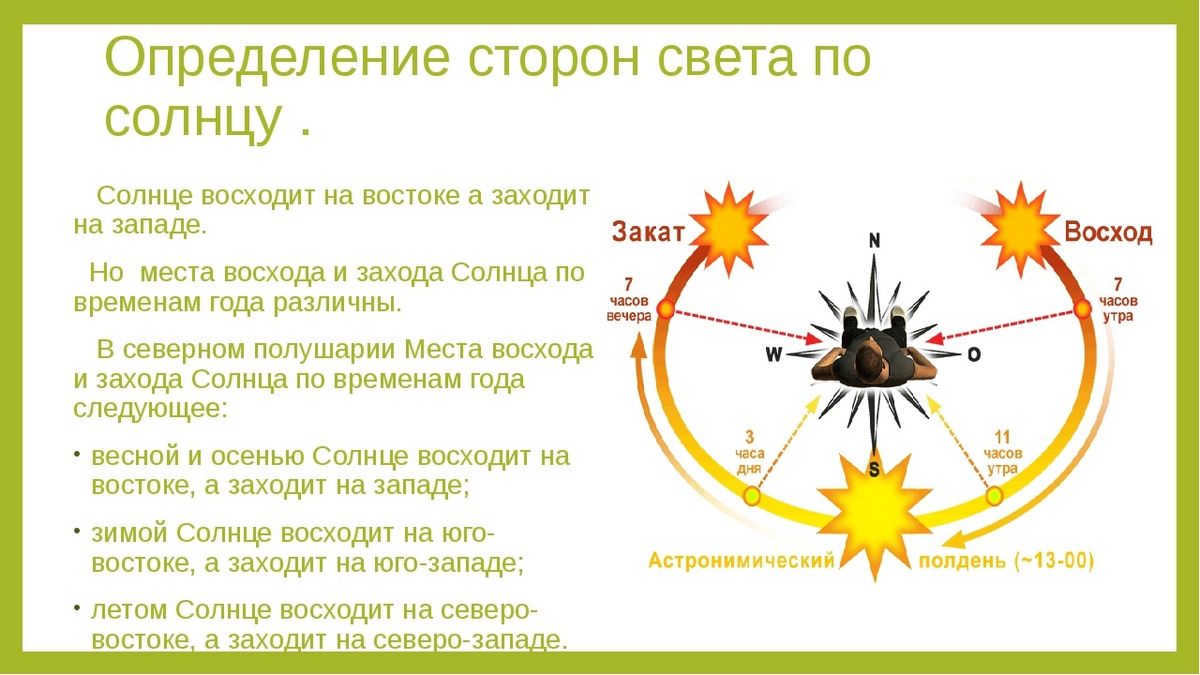
Adjacent to the sun
Many travelers often wonder not just about the locations of sunrise and sunset, but also about how to use a compass to determine the sun’s position at different times of the day. It is commonly known that the red arrow on a compass typically points north, according to the instructions in literature. However, it is important to note that arrows can come in different colors, so red might not be the correct color.
There is a simple method to accurately locate north. To do this, step outside with your device at midday and follow these steps:
- While outside, identify the south side by observing the sun. This is solely the side at noon.
- Align the compass horizontally, ensuring that the arrow points upwards.
- If the device is equipped with a locking lever, make sure to disengage it. Otherwise, the hand will be restricted from moving freely in the correct direction.
- Once the hand is properly aligned, one side of it will be facing the sun, indicating that it is exactly noon. Consequently, the opposite side will be pointing towards the north.
It’s important to note that this method may not be applicable in all situations. For instance, in tropical regions, the sun may appear overhead at noon, causing potential confusion in determining the measurements.
There is an alternative method for determining the sun’s position, although it is slightly more complex. To begin, the observation should be made at 6 o’clock in the morning, with the sun on your right side. In this scenario, midnight will be directly ahead of you, and the arrow pointing forward will indicate north.
The cardinal directions can be determined using the following steps:
- Hold the compass horizontally in your hand
- Ensure that the locking lever is disengaged
- Locate north on the compass and orient yourself to face that direction
- Now you can identify the corresponding area of the world
Keep in mind that when using a compass, avoid standing near objects made of iron, steel, or other materials with magnetic fields, as they can interfere with the compass’s accuracy.
Observing the Earth and Planets from Space
Not many people have the privilege to witness the breathtaking beauty of the planets and observe their movements from the vantage point of space. Astronauts who have ventured beyond our atmosphere provide remarkable insights into their observations: they explain that all the planets orbit the Earth in a counterclockwise direction, moving from west to east. Interestingly, Uranus exhibits a unique behavior as it appears to be spinning “horizontally,” possibly attributable to a shift in its center of gravity. In contrast, Venus rotates in the opposite direction, which may have been caused by a significant collision with a meteorite thousands of years ago.

When astronauts are on board the International Space Station, they have the opportunity to witness the Sun rising multiple times a day. Due to the ISS’s orbit around the Earth, it completes a full rotation every hour and a half, resulting in 16 sunrises and sunsets daily.
Here’s an interesting fact: in space, the sunrise happens in just a matter of seconds. NASA astronauts have captured stunning photos of this phenomenon, showing the golden coloring of the water’s surface and the extraordinary appearance of the clouds as the Sun prepares to rise.
Curious tidbits
A few fascinating facts regarding sunrises and sunsets:
- As per the transmissions from the Mars rover Spirit, the sunset on Mars takes on a blue hue. According to its findings, the Earth’s sky turns blue 2 hours prior to sunrise and remains so for an equal amount of time after sunset. This duration is significantly longer than that on our planet. The blue tint is caused by dust particles, which are situated high above the planet’s surface and scatter sunlight.
- Spectacular sunsets are exclusively observed on planets with atmospheres. On the Moon, for instance, the sky perpetually remains black.
- On Saturn’s moon Titan, sunsets can exhibit hues of brown, yellow, or orange.
- During the sunset, a bluish strip with a top of orange-pink color emerges on the opposite side of the sky, approximately 10-20 degrees above the horizon. This phenomenon is known as the belt of Venus and it is created by the shadow of the Earth. It can be observed from any location on our planet.
- At the Earth’s poles, the sunrise and sunset can only be witnessed once a year.
- A.S. Pushkin wrote an epigram about his schoolmate, who claimed in a poem that the sun rises in the west. The sarcastic Pushkin expressed sympathy for those individuals who, in such a case, are unsure whether to sleep or wake up.
Oleg Markov, a tourist instructor:
When it comes to orientation, the sun can be helpful in certain situations. However, it’s important to keep in mind that the sun doesn’t always rise directly in the east and set directly in the west (except for two days a year). The sun’s coordinates change depending on the time of year, making it quite challenging to determine the exact direction. If you need to reach a specific destination, it’s best to rely on a compass. However, if you simply need to maintain a general direction, the sun serves as a reliable reference point.
Understanding the direction in which the sun rises and sets is not as straightforward as it may initially appear. The study of the sun has been a topic of interest since ancient times. In fact, the ancient Egyptian priests developed astronomical tables that accurately depicted the timing of sunrises and sunsets throughout the year.
Furthermore, this data has proved to be invaluable in the field of agriculture as well as in the planning of various activities. Presently, this information continues to be relevant not just for wayward travelers, but also for agronomists, scientists, and even architects who rely on it to ascertain solar insolation.

The periods of time when the upper part of the sun’s circular shape is positioned exactly on the line where the sky meets the land are known as sunrises and sunsets. The reason behind the occurrence of sunrise and sunset is the rotation of the Earth around the star and its own axis. If the Earth had a different shape and did not move in an orbit, daylight would always be directly above us. In such circumstances, the possibility of life existing on Earth would be eliminated.
What constitutes a sunrise
A sunrise is characterized by the moment when the uppermost part of the Sun becomes visible above the horizon. In the field of astronomy, this phenomenon is defined as the full crossing of the solar disk over the horizon line.

The presence of the atmosphere on Earth has an interesting effect on the timing of sunrise. Due to atmospheric refraction, an observer on Earth sees the sunrise a bit earlier than they would if there was no atmosphere. This effect becomes even more pronounced when the observer is at a higher altitude, such as in the mountains.
On the Earth’s surface, the apparent size of the sun is about 30 minutes of arc, or 0.5°. This means that the length of a day should be slightly longer than half of a solar day. However, atmospheric refraction plays a significant role in determining the actual length of a day.
Refraction, also known as bending, happens to the sun’s rays when they pass through the Earth’s atmosphere. The sunrise appears to be about 35 minutes higher in the sky compared to a planet without an atmosphere. Consequently, for an observer on Earth, the sunrise occurs earlier than the actual time.
Due to the refractive effect:
- In equatorial latitudes, the length of the day extends by approximately 10 minutes;
- In temperate latitudes, it can extend up to 30 minutes;
- In polar regions, the day can be extended by up to 2 days.
What is the definition of a sunset?
A sunset is a natural occurrence where the upper part of the sun’s disk disappears below the horizon. In the field of astronomy, this term is used to describe the entire process of the sun descending below the horizon line.

Atmospheric refraction causes a delay in the time of sunset, just as it does with sunrise. This means that the sunset that we see from Earth appears to happen later than it actually does. Additionally, if the observer moves to a higher elevation, the time of sunset will be pushed back even further.
Where does the Sun rise and set?
While many people believe that the Sun always rises in the east and sets in the west, this is not entirely accurate. In reality, there are only two days in the year – the spring and fall equinoxes – when the Sun strictly rises in the east and sets in the west.
Throughout the rest of the year, the Sun’s movement is more complex. It gradually shifts from the north to the south, causing the points of contact with the horizon at sunrise and sunset to change slightly each day. During the June solstice, the Sun rises at its maximum northeastern point. As the days progress, the Sun gradually shifts southward. Finally, at the September equinox, the Sun sets exactly in the west and rises exactly in the east.
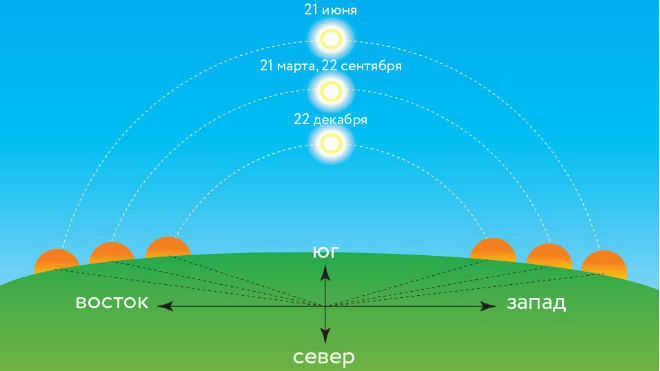
The movement of the Sun is perpendicular to the horizon in equatorial latitudes, regardless of the time of year.
Sunrise and sunset mark the beginning and end of the day, while twilight is the transitional period between day and night and vice versa, and it lasts longer. Morning twilight refers to the time between dawn and sunrise, while evening twilight refers to the time between sunset and sunset. The duration of the twilight period varies depending on the observer’s location on the planet and the calendar date.
During twilight, the sun gradually descends towards the horizon line, allowing some of its light rays to reach the surface of the planet by partially penetrating the upper layers of the atmosphere. The duration of the twilight period varies depending on the latitude:
- At the equator, twilight lasts for 20 to 30 minutes;
- In temperate latitudes, it can last for approximately 2 hours;
- In subpolar regions, twilight can extend for several days;
- In polar regions, it can last up to 3 weeks.
Due to the rotation of the planet, the timing of sunrises and sunsets varies in different parts of the world. Contrary to popular belief, the earliest sunrises are observed not in Japan, but in the islands of Kiribati, which are located on the far eastern meridian. On the other hand, the latest sunrises occur near the islands of Alaska in the Aleutian archipelago, which are situated on the far western meridian.
The duration of daylight hours is not constant, resulting in a shift in the timing of sunsets and sunrises throughout the year. In the summer months in the northern hemisphere, the length of the day is longer compared to the winter months, whereas the opposite is true in the southern hemisphere. Furthermore, the duration of daylight also varies across different latitude zones, with shorter days observed as the latitude increases.
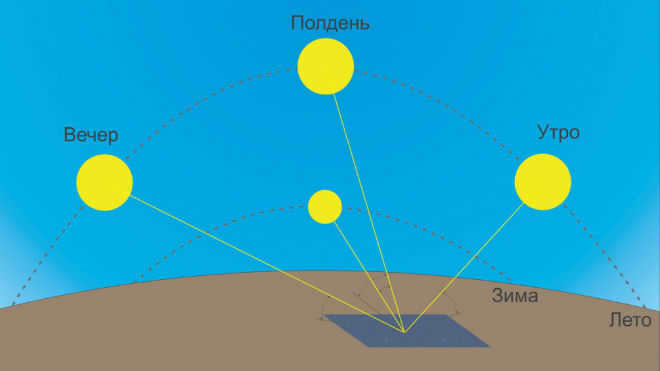

To find the timetable for when the sun rises and sets during a specific season and at a specific latitude, you can consult calendars or use online services that provide this information.
Ways to differentiate between sunset and dawn
During the sunrise and sunset, a mesmerizing optical phenomenon occurs, where the sky and the Earth’s surface are adorned with rays of various colors. By observing the prevailing colors, it is possible to visually distinguish between the sunset sky and the dawn sky. The colors during dawn are more subtle and cool, with an abundance of pink, purple, and blue hues. On the other hand, during sunset, the sky showcases vibrant shades of red and yellow, occasionally accompanied by hints of green in certain areas of the sky and the illuminated earth surface.

The deeper and more vibrant hues of the sunset can be explained by the Earth’s surface heating up during the day, causing it to lose moisture and creating faster air currents that capture dust particles. As the sunlight passes through the dusty atmosphere, it scatters and dims, resulting in the sunset taking on red colors. This is because the red color, which has the longest wavelength in the solar spectrum, is more resistant to scattering in a dusty and compacted atmosphere compared to shorter wavelength cold colors. During the night, the layers of air clear and the dust settles, leading to a dawn sky that is characterized by greater clarity and a wider range of hues.
Sunsets and sunrises are a truly stunning spectacle, even when surrounded by cityscapes. Each day, countless photographers around the globe capture the magnificence of the ascending and descending sun, producing captivating images that are impossible to look away from.

The sunrise and sunset are both natural phenomena that take place on our planet. The exact location of where the sun rises and sets is not constant, but rather changes depending on the season. In this article, we will explore the locations of sunrise and sunset, as well as the unique characteristics of the spring and fall equinox, and the visual differences between sunset and sunrise.
General Information
As we all know, the Earth undergoes rotation on its own axis, resulting in the occurrence of alternating periods of day and night. Additionally, our planet revolves around the sun, which leads to the changing of seasons.
It is widely accepted that the sun appears to rise in the eastern part of the sky and sets in the western part. However, this belief is not entirely accurate. There are only two specific days throughout the year when this celestial luminary adheres to such a pattern. These days are September 23 and March 21, which mark the autumn and spring equinoxes respectively. On these particular days, the duration of daylight and darkness is equal, with 12 hours allocated for each. Consequently, the sun clearly rises in the east and sets in the west during these times.
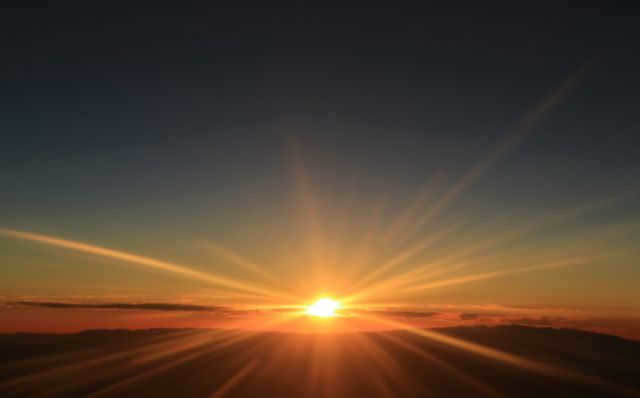
The determination of the direction in which the sun rises and sets greatly depends on the seasons. It is important to note that in the Northern Hemisphere:
- During the summer, the sun rises between the north and east, and sets between the north and west;
- During the winter, it rises between the south and east, and sets between the west and south;
- During the fall and spring, it rises between the northeast and southeast, and sets between the northwest and southwest.
In the Southern Hemisphere, the order of events is reversed, with sunset occurring before sunrise. This phenomenon is a result of the opposite seasons experienced in the Northern and Southern Hemispheres. When it is winter in the Northern Hemisphere, it is summer in the Southern Hemisphere and vice versa. Additionally, the positions of spring and fall are also switched. These changes in the order of events are a direct consequence of the Earth’s rotation around the Sun and the uneven distribution of sunlight.
Russia, being a vast country that spans a significant portion of the Northern Hemisphere, follows the same pattern as the rest of the Northern Hemisphere when it comes to sunsets and sunrises. Therefore, the principle of reversed order applies to Russia as well.

Distinguishing Sunsets from Sunrises
As you may be aware, a sunrise is when the sun’s disk appears above the horizon, while a sunset is when it sets below the horizon line. However, there are additional distinctions between these two natural occurrences.
During sunsets and sunrises, the sky takes on different hues, allowing you to differentiate between the two. In the early morning, the sky exhibits more delicate and cool colors, with shades of purple, pink, and blue prevailing. Conversely, during sunsets, the sky is adorned with vibrant and bold shades of yellow and red.

The variation in the color of the sky can be attributed to the phenomenon where the Earth’s surface gets heated during the day, causing air currents to carry dust particles. When the sun sets, its light passes through the dusty air, resulting in vibrant red hues. As the night progresses, the dust settles and the air clears, allowing for a purer and more delicate sky color palette.
What knowledge have we acquired?
The position of the sunrise and sunset is determined by the time of year and the hemisphere of the Earth. The sun rises in the east and sets in the west, but this can vary depending on the season and location. There are two special days in the year, known as the autumn and spring equinoxes, when the sun rises exactly in the east and sets exactly in the west. Students typically learn about the concepts of sunrise and sunset in the 2nd grade as part of their studies on the natural world.

Direction of Sunrise and Sunset
There are only two specific days throughout the year when the sun rises directly in the east and sets directly in the west. These days are March 20th and September 23rd, which are known as the vernal and autumnal equinoxes, respectively. On any other day, the locations of sunrise and sunset will be slightly shifted. The reason for this deviation is explained below.
Definition of Sunrise
The appearance of the upper edge of the solar disk is called sunrise. It is also known as the birth of a new day or the morning dawn. Astronomers define sunrise as the complete passage of the sun above the horizon line. The presence of the atmosphere affects the timing of this phenomenon due to atmospheric refraction. This refraction causes the observer on Earth to see the sunrise earlier than the actual moment, resulting in certain territories experiencing a longer sunny day:
In polar regions, the transition from polar night to polar day lasts approximately 2 days.
What is a sunset?
A sunset occurs when the sun descends below the western horizon line, causing the solar disk to gradually lose its brightness. Initially, it takes on a yellow hue, then transitions to orange and eventually shifts to various shades of red. The sky surrounding the sun also undergoes a transformation, transitioning from a golden color to a deep blood-red, all against a backdrop of blue or sometimes greenish hues.
While admiring a sunset, it is worth taking note of the exact opposite side of the sky. Here, the Earth’s shadow is visible as a strip of bluish ash color, known as the Belt of Venus. Above the shadow, a bright segment can be observed. This stunning phenomenon, visible worldwide, occurs as long as the sky is not obscured by clouds.

As the Sun descends beneath the horizon, the colors become increasingly vibrant. Once the Sun is no longer visible, the Buddha Rays emerge, initially strong and gradually fading with each passing minute until they merge with streaks of crimson. Conversely, the Belt of Venus dissipates, making way for the rise of the Moon and the arrival of nightfall.

Distinguishing between sunrise and sunset
The rotation of the earth around its axis is evident in both sunrise and sunset. At first glance, they may appear to be identical. However, those who wake up early have the opportunity to compare the two: the rays of the rising sun are brighter, and the surrounding colors take on delicate shades. On the other hand, during sunset, the sun and the sky take on tones of red. This evening coloring is caused by the visibility of dust particles that rise up in the evening due to lower humidity and increased air currents.
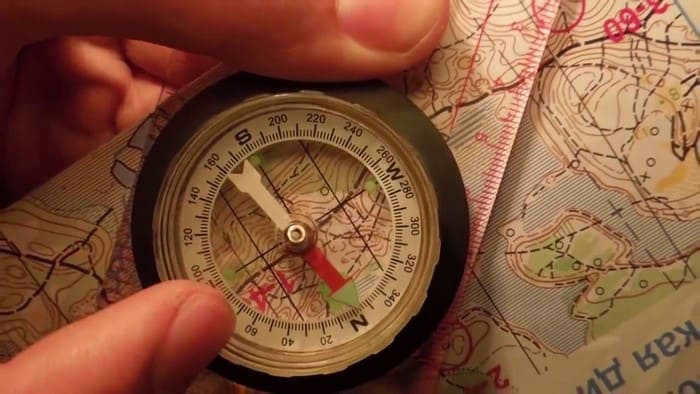
Different Types of Hemispheres and Their Variations
The verdant sphere of Earth is conventionally divided into four hemispheres: the Northern and Southern hemispheres, which are divided by the equator, and the Western and Eastern hemispheres, which are defined by the Greenwich and 180⁰ meridians. The Northern and Southern hemispheres play a vital role in determining the seasons. The change in seasons occurs due to the rotation of our planet around the Sun and the uneven distribution of sunlight. During the winter season in the Northern Hemisphere, the Southern Hemisphere experiences summer. Conversely, when the Southern Hemisphere is blanketed in snow, the Northern Hemisphere basks in warmth.

In the Northern Hemisphere, the directions of sunrise and sunset are as follows:
| Spring | Summer | Autumn | Winter | |
| Sunrise | Northeast | Northeast | Southeast | Southeast |
| Sunset | Northwest | Northwest | Southwest | Southwest |
To see the sunrise directly in the east and the sunset in the west, you have to wait until the vernal or autumnal equinox, which fall on March 20th or September 23rd.
There are two additional significant days in the calendar that deserve our attention: the “solstice days”. These particular days mark the points at which the celestial luminary reaches its highest or lowest position in relation to the Earth. The dates to remember are December 21-22 for the winter solstice and June 20-21 for the summer solstice.

Having the ability to navigate is not only beneficial for tourists, but also for individuals who have an interest in basic navigation. Here’s a technique to determine the correct direction when located in either the Northern or Southern Hemisphere:
Position yourself with your back facing the Sun, and observe your own shadow.
Fascinating fact! In the Northern Hemisphere, the celestial sphere moves in a clockwise direction from west to south. Conversely, in the Southern Hemisphere, the celestial sphere moves clockwise from east to west across the Nordic part of the sky. This can lead to confusion for travelers in Australia who may mix up the west and east directions.
From which direction does the Sun rise?
Approximately 30% of the global population holds the belief that the Earth remains stationary while the Sun traverses the sky. This perspective arises due to the relative nature of motion. When an individual selects a specific frame of reference, whether an object is in motion or not, the direction from which it rises and continues to move is evaluated subjectively.
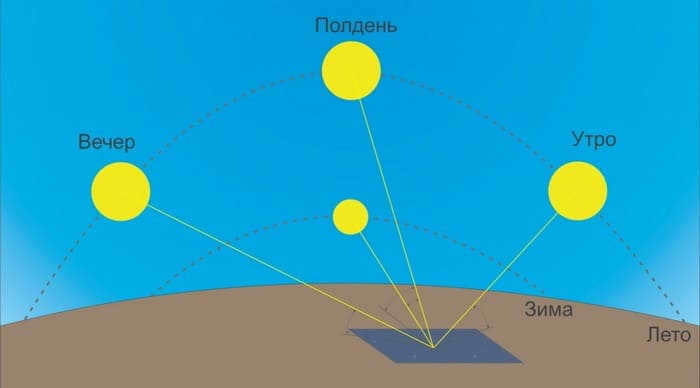
The Sun is orbited by the Earth as it rotates on its axis. It completes a full rotation in 24 hours (a day), and these rotations occur in a counterclockwise direction. Consequently, it is incorrect to say that the sun rises in the east and sets in the west in the same locations. The points of sunrise and sunset are constantly changing. As the seasons change, the reference point for sunrise shifts. After the spring solstice, the points of sunrise and sunset gradually move towards the north. This continues until the day of the fall equinox. The further north the observation point, the more the sunrise point shifts towards the west.
Where the Sun goes down
Imagine if our planet was completely flat and motionless, the light source would always be directly above, there would be no occurrences of the sun rising or setting. Fortunately, the sun rises in the east and sets in the west, creating a cyclical pattern of life.
Each morning, the sun’s disk emerges on the eastern side of the horizon and follows a predictable path. The region of the horizon where the sun sets is traditionally referred to as the west. Before the Earth rotates towards the sun again, completing one full rotation on its axis, it will be daytime once more. In reality, the sun doesn’t actually set anywhere: it remains stationary while the Earth rotates towards or away from it. In astronomy, the setting time is when the top of the sun’s disk becomes completely invisible over the horizon.
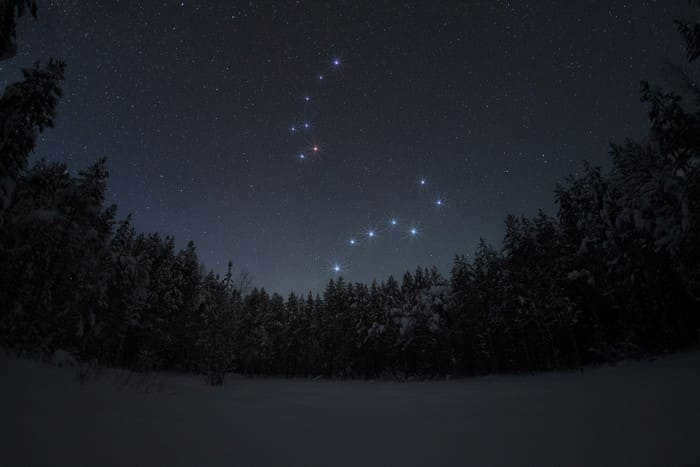
Motion of the Sun
When observing the Sun during the day (with the appropriate filter, of course!), it may appear to be stationary. However, if you mark an object as a reference point, you will soon notice the movement of the shadow, the change in its length, and the fact that the Sun has shifted to the right, towards the west.
The Earth’s axis of rotation is not perpendicular to the plane of its orbit, nor is it parallel to the axis of rotation around the Sun. There is an angle of inclination of 23 degrees between these axes. Therefore, when moving from the Southern Hemisphere to the Northern Hemisphere, the Earth tilts by 23 degrees, and when moving back, it tilts again. Without this angle, our planet would not experience the change of seasons.
Following the spring equinox, when the sun rises and sets directly in the east and west, individuals gather to experience the rays angled towards the northeast, signaling the arrival of summer. By July 21, this shift on the horizon reaches its peak. Subsequently, each day, the sunrise becomes more and more noticeable to the south. Finally, on September 22, the sun will once again rise and set directly in the east and west.
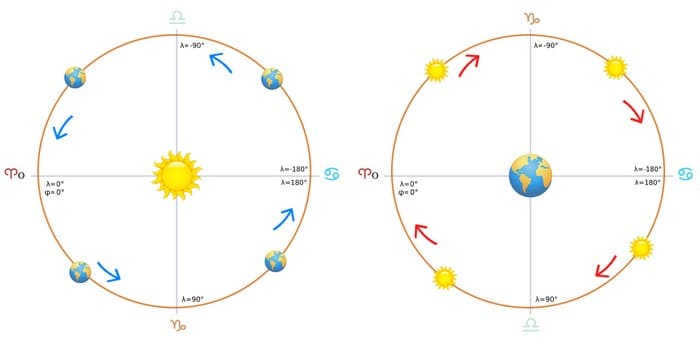
The brightness of our planet at different times of the year is directly influenced by its distance from the Sun and the direction in which it is facing. This is the daily movement of the Sun:
The primary source of warmth will emerge in the east at approximately 6 am, progressing towards the west until 6 pm. At around noon, it will reach its highest point in the sky, which corresponds to due south. However, to accurately determine direction, the difference between actual time and astronomical time must be considered.
To determine the cardinal directions using the Sun, estimate the time, and locate a position on a map – these are the essential factors for understanding where the Sun rises and sets, and its movement throughout the day and year.
Here’s an easy and popular method to determine a landmark using the position of the Sun:
- Locate a straight stick that is approximately 1 meter in length and insert it into the ground where the shadow is clearly visible.
- Place a marker at the point where the end of the shadow falls.
- Wait for approximately 15 minutes, during which time the shadow will move.
- Place a second marker at the new position of the shadow.
- Connect the two markers with a straight line and extend it by 30 cm.
- Stand with your left foot on the first marker and your right foot on the second marker.
In the Northern Hemisphere, this method will give you the direction towards the North.
There are certain nuances to the well-known method of orienting oneself using the Sun and a clock, failure to adhere to which can result in making a mistake and potentially finding oneself in an emergency situation. It is important to note that this method is applicable only in the Northern Hemisphere, specifically above the tropics. In regions with high latitudes, the Sun does not set below the horizon for extended periods of time, nor does it rise above it during the polar night.
What is the Sun’s position at noon?
It is commonly believed that at 12 noon, the Sun is in the southern direction, which is useful for determining the cardinal directions using a clock and the Sun. This concept forms the foundation of orienteering, although it should be noted that it only provides an approximate location.
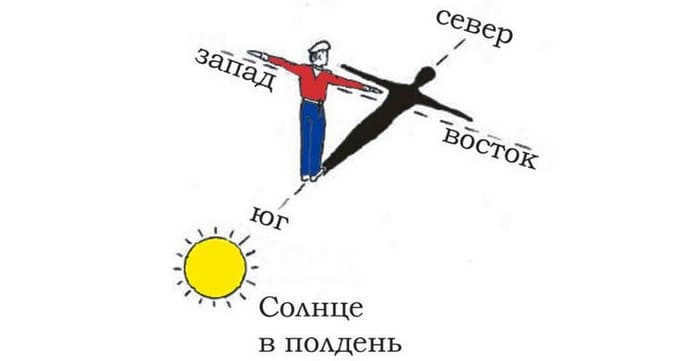
Despite everything, there are various influences that determine the position of the sun, proving that its location at noon is not consistently in the south:
- The longitude of a location determines when astronomical (true) noon occurs, which may not always align with the official noon recognized in that specific area. It is common to consider 12:00 PM as the midpoint of the day, regardless of whether the sun has passed through the highest point in its trajectory, known as the zenith. From the vantage point of the Earth’s surface, sunrise always appears in the east, regardless of whether one is in the northern or southern hemisphere. Due to differences in geographic longitudes, two individuals will experience the sun at its zenith at different times: first, the person located farther east, and then the person observing from the west.
- The conversion of nations to daylight saving time (DST). Neglecting this particular detail can result in a traveler’s error, placing them approximately 30⁰ off course in middle latitudes, and even more in tropical countries. This is a significant factor to consider, as a mere 1⁰ deviation can lead a traveler astray from their intended route. In terms of distance, this deviation translates to approximately 20 meters for every kilometer traveled.
- The movement of the Earth around the Sun is a fascinating phenomenon. Unlike a perfect circle, the Earth’s path is actually an ellipse, causing it to come closer to and move away from the Sun. As a result, the length of the day varies depending on the Earth’s proximity to the Sun. This means that the solar day, which is the time between two solar noons, can have different durations. It’s important to note that the Earth is tilted in relation to its axis of rotation. An interesting fact is that in the middle latitudes of the northern hemisphere, the position of the Sun at 12:00 does not form a straight line. Instead, it creates a figure-eight shape on the clock, representing the Sun’s position alternately from the south and north sides. If these deviations are not taken into account, there can be a margin of error of 4⁰ in the middle latitudes and 10⁰ or more in the tropics.
- Geographic latitude has an impact on the position of the solar disk.
| The sun is directly overhead | Solstice days, sun at noon | |
| At mid-latitudes in the Southern Hemisphere | South | Summer occurs in the north |
| At the upper boundary of the tropics in the Southern Hemisphere | South | Summer is directly overhead |
| At the lower boundary of the tropics in the Southern Hemisphere | North | Winter is directly overhead |
| At the Equator | South (from fall to spring equinox) |
So, in regions where the tropical zones transition to temperate zones, the occurrence of the zenith (when the sun casts no shadow) happens once a year. In areas closer to the equator, this phenomenon is observed twice.
A few decades ago, scientists used to calculate the timing of sunset and sunrise through continuous data manipulation. Modern technology now makes these calculations much easier. By utilizing specialized applications that input geographic coordinates and dates, one can determine the exact time when the celestial luminary will emerge from the horizon, reach its zenith, and set below the horizon. Additionally, there are tables that display the luminary’s displacement at varying latitudes throughout the year. The azimuths are measured from the furthest north position:
The table disproves the mistaken judgement regarding sunrise and sunset.
View from space
Not everybody gets the opportunity to ascend into the heavens to marvel at the magnificence of the celestial bodies and contemplate their movement. Astronauts who have journeyed into space depict their observations as such: Each planet follows a counterclockwise orbit, moving from west to east. Uranus spins on its side, likely due to a shifted center of gravity, while Venus rotates in the opposite direction, possibly as a result of a collision with a meteorite thousands of years ago.

Astronauts aboard the International Space Station have the unique opportunity to witness the sunrise of the solar disk multiple times a day. Due to the ISS’s orbit around the Earth, they can encounter the Sun 16 times within a 24-hour period.
Fascinating fact! Interestingly, in the realm of space, the sunrise is incredibly brief, lasting only a few seconds. Captivating photographs taken by NASA astronauts capture the beauty of this fleeting moment: as the Sun prepares to depart, the water surface takes on a golden hue and the clouds appear extraordinary.
Exploring the North Pole and various regions across the globe
Explorers in the polar regions have made a fascinating discovery: while stationed at the North Pole and observing the sunset, they have noticed that the sun appears to move from east to west, even though it actually moves from west to east. It is only at the North Pole that one can experience day and night periods that last for half a year. During the autumn equinox, the sun completes a full circle on the horizon. Each day, it rises higher in a spiral pattern, reaching a maximum height of 23-27 degrees during the summer solstice. After that, the process reverses until the fall equinox. At this point, the sun circles the entire horizon before gradually dipping below it. The period of dawn can last anywhere from a week to a month, and it is observed all around. The white nights slowly give way to darkness, marking the middle of the polar night. However, the sun never falls below 23-27 degrees below the horizon, so it still remains relatively bright, and the morning star can still be seen.

If you take two geographical points situated in different hemispheres, both equidistant from the equator, you will notice an interesting phenomenon. In the Northern Hemisphere, at noon, the Sun appears to be in the southern direction, whereas in the Southern Hemisphere, it appears to be moving towards the north. However, at the equator, during noon, the Sun is observed in the northern direction for half of the year and in the southern direction for the other half. Moreover, on two specific days in a year, the Sun passes directly overhead.
Twilight
The period in the evening after the primary star has completely descended and in the morning before it emerges is known as twilight. This enigmatic time of day, which is celebrated by poets and filmmakers alike, lasts approximately two hours: the ascending and descending celestial body casts its final beams upon the Earth, which are then reflected in the higher regions of the atmosphere. However, this two-hour duration is applicable only in Russia, specifically within temperate latitudes.


The duration of twilight depends on various factors such as the calendar and the location of observation:
- In the equatorial zone, twilight typically lasts for about 30 minutes;
- In temperate latitudes, twilight can last for approximately 2 hours;
- In subpolar regions, twilight can extend for several days.
Note! Twilight is divided into three periods. The first period, known as civil twilight, occurs when the solar circle is 6⁰ below the horizon. The second period, known as nautical twilight, happens when the solar disk is between 6-12⁰ below the horizon. The third period, called astronomical twilight, occurs when the solar disk is between 12-18⁰ below the horizon. This is the darkest time before nightfall.
Reasons to Monitor the Sun’s Movements
It has long been observed that the movements of celestial bodies have a direct impact on events here on Earth. This connection was recognized early on and led to the development of various calendars, such as the solar and lunar calendars. Today, scientific research has further expanded our understanding of the Sun’s influence through:
- Recognizing the biological rhythms of living organisms that are tied to the Sun’s cycles.
- Predicting and preparing for flares and magnetic storms, allowing populations who are sensitive to weather changes to handle them more comfortably.
- Using the Sun’s movement as a reliable navigation tool.
- Basing astronomical calculations on key indicators of solar activity.
The weather is influenced by the sun, so it is important to consider the sun’s path and the possibility of rain when planning activities. Primitive people relied on their observations of the sun to ensure their survival. They needed to know when to return to their camp, where to build a winter shelter, and how to find their way if they were lost. Although they didn’t have knowledge of astronomical terms, they were able to determine the cardinal directions and calculate the time of day by observing the sun. They invented tools such as sand clocks, sundials, and stone clocks, which played a crucial role in advancing civilization.
Have you discovered any new information? Feel free to share it in the comments!

